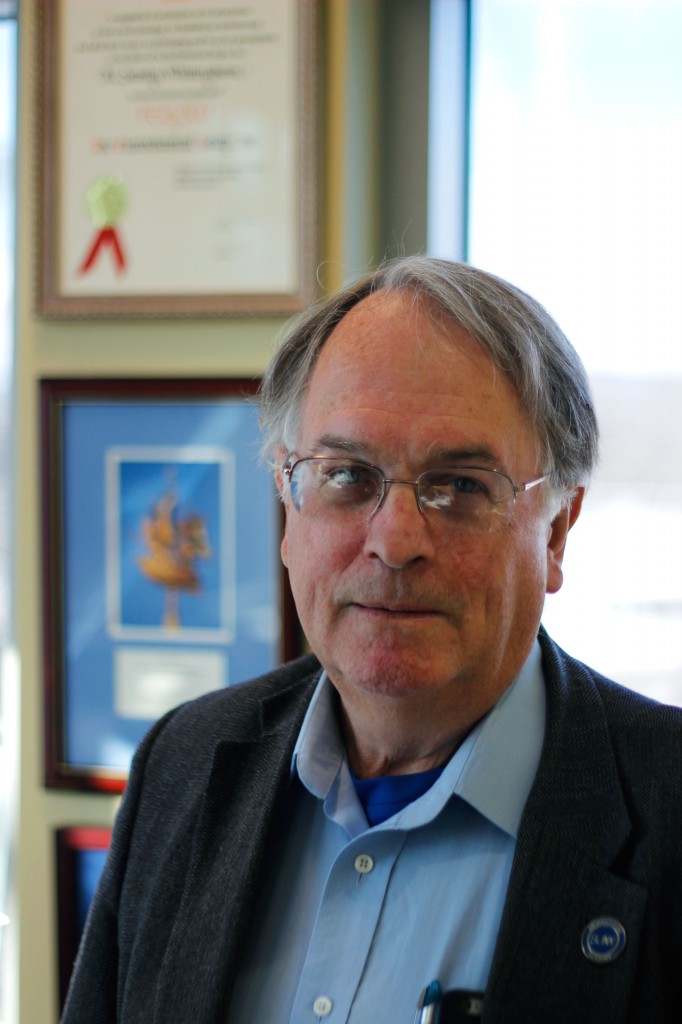
Every day, students plug their laptops and phones into outlets to charge. This may seem like a normal activity, but it represents a revolution in the way energy is stored. One of the men who started the revolution is right here at Binghamton University.
M. Stanley Whittingham, a distinguished professor of chemistry and materials sciences, pioneered the development of the lithium-ion battery, which is used in cell phones, laptops, electric vehicles and numerous other devices, while working with a team studying superconductors at ExxonMobil in the 1970s.
Whittingham received the National Alliance for Advanced Transportation Batteries (NAATBatt) Lifetime Achievement Award Feb. 18 for more than 40 years of research on lithium-ion batteries.
According to Jim Greenberger, executive director of NAATBatt, the organization recognizes those that it feels upholds the mission of NAATBatt, which is to promote the development and use of stored energy technology in vehicles and renewable energy sources like solar and wind power.
Recipients are voted on by the Board of Directors. Others awarded were Naum Pinksy, a researcher from the Southern California Edison Company, who received the Technology Commercialization Award, and Sally Miksiewicz, the former CEO of East Penn Manufacturing Company, who was posthumously awarded the Lifetime Achievement Award for Industry.
Louis Piper, a BU physics professor, said that Whittingham has been an inspirational member of BU, and has even helped get him other research grants.
“It’s been great to have a leading world expert that you can come say ‘We’re seeing something that we think is unusual’ and he is willing to synthesize and explore that more, and has the resources to do so,” Piper said.
The energy from batteries comes from the movement of electrons from the negative end of the battery, the anode, to the positive end of the battery, the cathode. Between the anode and cathode is an electrolyte, a solution of charged particles. In lithium-ion batteries, lithium ions contained in the anode move to the cathode, increasing its positive charge and drawing the electrons toward it.
Lithium-ion batteries revolutionized energy storage technology because they are rechargeable and can store up to 10 times more energy than standard batteries used at the time, such as nickel-cadmium batteries or lead-acid batteries.
Lithium-ion batteries are also much smaller than other types of batteries, better for use in portable devices.
Last June, the NorthEast Center for Chemical Energy Storage (NECCES), which is directed by Whittingham, received a $12.8 million four-year research grant from the United States Department of Energy (DOE) to work on materials science and battery technology. It is one of the largest grants in the history of the University.
Currently, Whittingham and his colleagues at the NECCES are searching for a way to increase the efficiency of lithium batteries by using different materials than carbon, such as silicon or tin, to build the anode.
By changing the material of the anode, Whittingham and his colleagues hope to increase the structural integrity of the battery, thus increasing its ability to store energy for longer periods of time.
“If we can make your iPhone last a week or let your car drive for 300 miles, we’d be a lot happier,” Whittingham said. “Our goal is to increase the amount of energy we store, make it safe and lower the cost.”
Although he has two lifetime achievement awards under his belt, one from NAATBatt and another from the International Battery Association in 2013, Whittingham says that he is not done with batteries just yet.
“It’s exciting,” Whittingham said. “You can do very fundamental science and chemistry and at the same time, see it go into the market and make an impact.”


